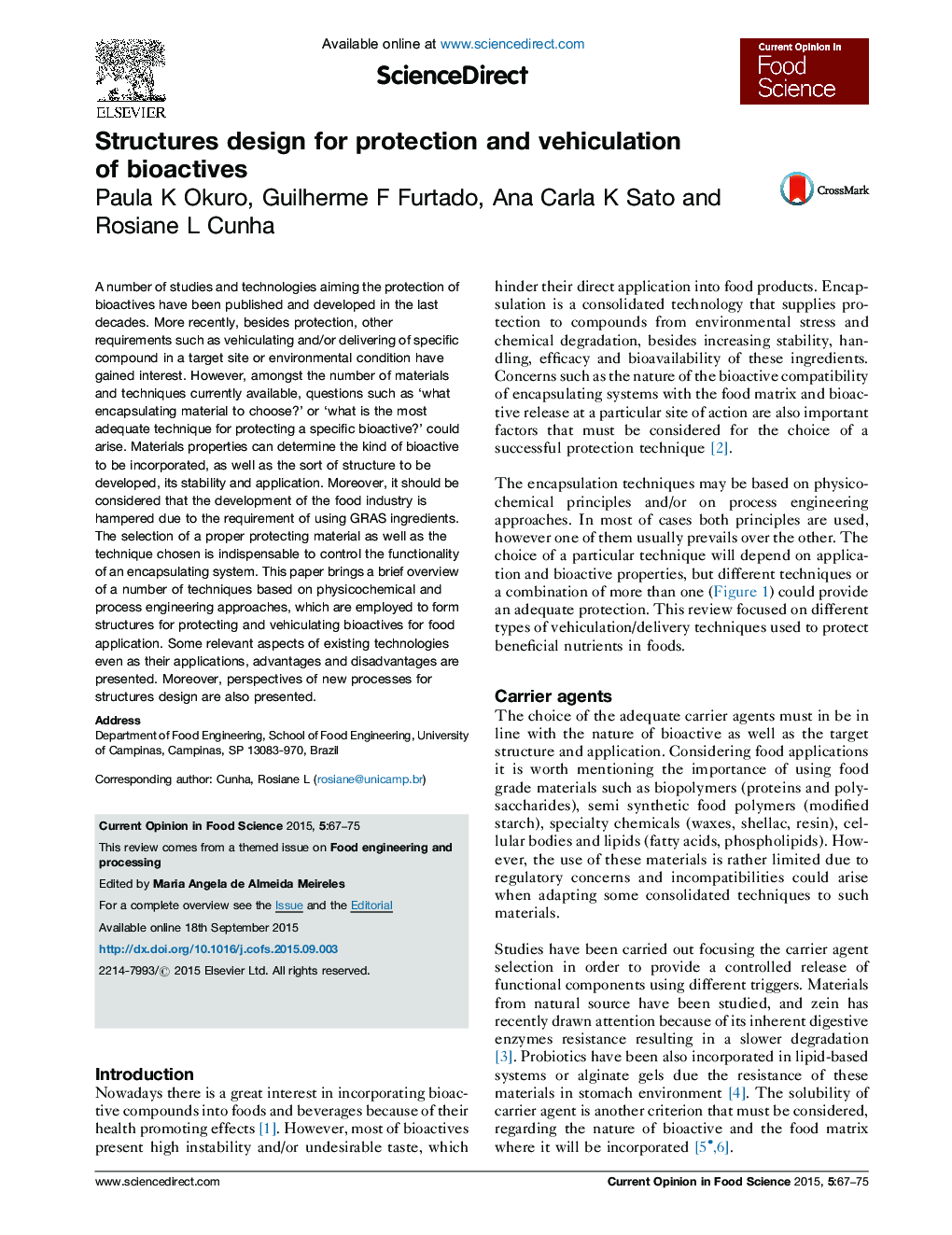| Article ID | Journal | Published Year | Pages | File Type |
|---|---|---|---|---|
| 2079710 | Current Opinion in Food Science | 2015 | 9 Pages |
•Different systems are used for protection, vehiculation and delivery bioactives.•Food particles can be in colloidal, liquid droplets, soft matter or solid form.•The nature of bioactives can define its location within the structure.•Systems are based on physicochemical and/or process engineering approaches.
A number of studies and technologies aiming the protection of bioactives have been published and developed in the last decades. More recently, besides protection, other requirements such as vehiculating and/or delivering of specific compound in a target site or environmental condition have gained interest. However, amongst the number of materials and techniques currently available, questions such as ‘what encapsulating material to choose?’ or ‘what is the most adequate technique for protecting a specific bioactive?’ could arise. Materials properties can determine the kind of bioactive to be incorporated, as well as the sort of structure to be developed, its stability and application. Moreover, it should be considered that the development of the food industry is hampered due to the requirement of using GRAS ingredients. The selection of a proper protecting material as well as the technique chosen is indispensable to control the functionality of an encapsulating system. This paper brings a brief overview of a number of techniques based on physicochemical and process engineering approaches, which are employed to form structures for protecting and vehiculating bioactives for food application. Some relevant aspects of existing technologies even as their applications, advantages and disadvantages are presented. Moreover, perspectives of new processes for structures design are also presented.
